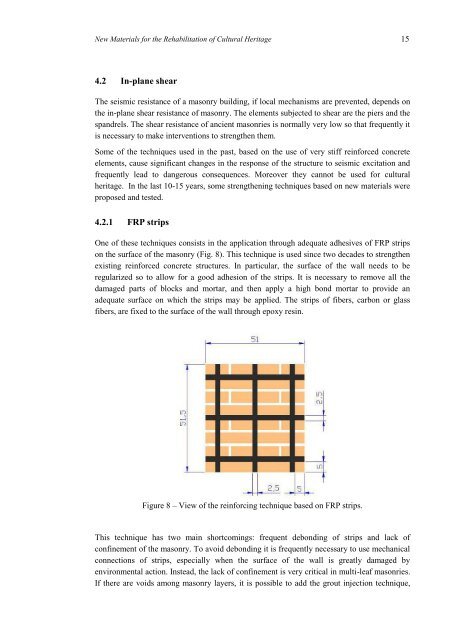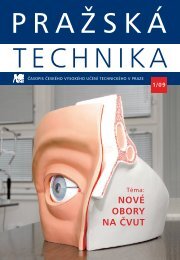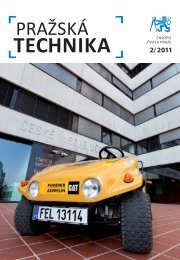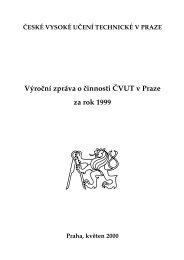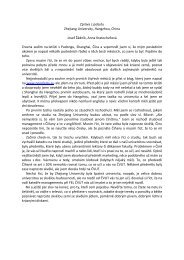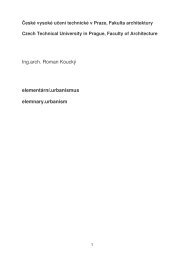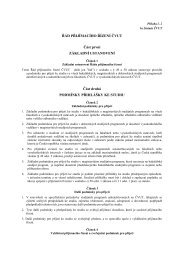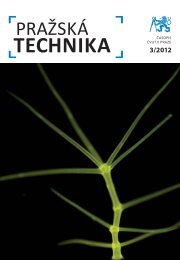New Materials for the Rehabilitation of Cultural Heritage - Czech ...
New Materials for the Rehabilitation of Cultural Heritage - Czech ...
New Materials for the Rehabilitation of Cultural Heritage - Czech ...
You also want an ePaper? Increase the reach of your titles
YUMPU automatically turns print PDFs into web optimized ePapers that Google loves.
<strong>New</strong> <strong>Materials</strong> <strong>for</strong> <strong>the</strong> <strong>Rehabilitation</strong> <strong>of</strong> <strong>Cultural</strong> <strong>Heritage</strong> 15<br />
4.2 In-plane shear<br />
The seismic resistance <strong>of</strong> a masonry building, if local mechanisms are prevented, depends on<br />
<strong>the</strong> in-plane shear resistance <strong>of</strong> masonry. The elements subjected to shear are <strong>the</strong> piers and <strong>the</strong><br />
spandrels. The shear resistance <strong>of</strong> ancient masonries is normally very low so that frequently it<br />
is necessary to make interventions to streng<strong>the</strong>n <strong>the</strong>m.<br />
Some <strong>of</strong> <strong>the</strong> techniques used in <strong>the</strong> past, based on <strong>the</strong> use <strong>of</strong> very stiff rein<strong>for</strong>ced concrete<br />
elements, cause significant changes in <strong>the</strong> response <strong>of</strong> <strong>the</strong> structure to seismic excitation and<br />
frequently lead to dangerous consequences. Moreover <strong>the</strong>y cannot be used <strong>for</strong> cultural<br />
heritage. In <strong>the</strong> last 10-15 years, some streng<strong>the</strong>ning techniques based on new materials were<br />
proposed and tested.<br />
4.2.1 FRP strips<br />
One <strong>of</strong> <strong>the</strong>se techniques consists in <strong>the</strong> application through adequate adhesives <strong>of</strong> FRP strips<br />
on <strong>the</strong> surface <strong>of</strong> <strong>the</strong> masonry (Fig. 8). This technique is used since two decades to streng<strong>the</strong>n<br />
existing rein<strong>for</strong>ced concrete structures. In particular, <strong>the</strong> surface <strong>of</strong> <strong>the</strong> wall needs to be<br />
regularized so to allow <strong>for</strong> a good adhesion <strong>of</strong> <strong>the</strong> strips. It is necessary to remove all <strong>the</strong><br />
damaged parts <strong>of</strong> blocks and mortar, and <strong>the</strong>n apply a high bond mortar to provide an<br />
adequate surface on which <strong>the</strong> strips may be applied. The strips <strong>of</strong> fibers, carbon or glass<br />
fibers, are fixed to <strong>the</strong> surface <strong>of</strong> <strong>the</strong> wall through epoxy resin.<br />
Figure 8 –View <strong>of</strong> <strong>the</strong> rein<strong>for</strong>cing technique based on FRP strips.<br />
This technique has two main shortcomings: frequent debonding <strong>of</strong> strips and lack <strong>of</strong><br />
confinement <strong>of</strong> <strong>the</strong> masonry. To avoid debonding it is frequently necessary to use mechanical<br />
connections <strong>of</strong> strips, especially when <strong>the</strong> surface <strong>of</strong> <strong>the</strong> wall is greatly damaged by<br />
environmental action. Instead, <strong>the</strong> lack <strong>of</strong> confinement is very critical in multi-leaf masonries.<br />
If <strong>the</strong>re are voids among masonry layers, it is possible to add <strong>the</strong> grout injection technique,


